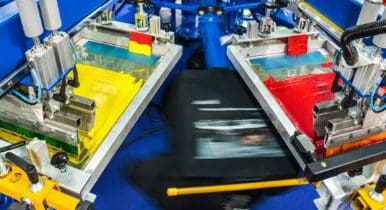Selling Merch is Getting Easier. How Much Should Campaigns Invest?

Long-time digital practitioner Gerrit Lansing doesn’t fit the profile of a political creative. But as the president of payment processor WinRed, he’s pushing campaigns to integrate merch shops into their fundraising plans.
Merchandise hasn’t been a huge fundraising channel for most campaigns, although that’s certainly shifting. Last year, more 12,000 products were created by state, local, and federal campaigns using WinRed’s commerce platform, according to the company. For the midterms, Lansing’s goal is getting 40 percent of the some 5,000 campaigns it anticipates working with by November into the merch game.
C&E: Why should campaigns invest their creative energy and staff power into a merch operation?
Lansing: What I always preach about merch is that it’s easier to get set up and get going and get success than it is to run a big email or text message campaign. You’re starting to see some examples of people doing what I would be doing, which is throwing a funny tweet or a meme on a mug and 10 people buy and go from there. What I preach is that it’s really a communications tool for now. The merch is the message.
And if every week you’re rolling out a new message just encapsulated in merchandise format, it’s going to go farther; it’s more shareable. You get a message out and you get some emails and some revenue in.
C&E: What about the criticism that it’s a low-margin play for a campaign’s fundraising operation?
Lansing: The margin’s whatever you want it to be. WinRed [charges] 3.94 percent [on the transaction]. For the most part, the wholesale cost of an on-demand T-shirt is $10 or $15. The wholesale cost of a mug, probably a few bucks. We just pass through those costs from the merchandise operation.
The margin to the campaign is what they’re charging for it. What I teach is that 99 percent of the time, they are vastly undercharging for those products. The people who will buy a T-shirt from a campaign are hardcore fans of that campaign. Therefore, they’re telling you that they’ll pay more for it because that’s not just not something that everyone does. They’re undercharging for it. T-shirts should be $40 or $50.
C&E: Do your suppliers have a bulk option?
Lansing: There’s a whole bulk setup so that if you know you’re going to have a big event, you want everyone to go home with a hat on their dinner plate, you buy 300 of those. Obviously, the wholesale cost comes down.
C&E: What’s working for campaigns who are pushing merch?
Lansing: It’s really about actioning the zeitgeist of the moment, if you will, in merchandise format, which can be as simple as a tweet on a mug. Everyone’s first instinct is to throw the campaign’s logo up there. Sorry, but no one wants to buy [merch] with the campaign’s logo, except your top 500 fans. In which case, sell it for $99.
My prediction this cycle: there’s going to be a state or local campaign, or a small House campaign who just comes out with the merch of the moment, with the message of the moment and totally blows up nationally and they get hundreds of thousands or millions of dollars for like a tiny campaign because they happen to nail that moment.
C&E: How important is it to be quick with the release of new items?
Lansing: Speed always kills with the stuff: probably the all-time [great] one was the Trump plastic straws. They thought it was going to be just a big tweet in a news cycle and I think they ended up selling a couple million dollars worth of straws.
The big picture is that politics and pop culture are pretty much totally overlapped right now, for better or worse. Michael Jordan just didn’t comment on politics 30 years ago; LeBron James does. Therefore if something is happening in pop culture now, you have to be quick to seize on it.



